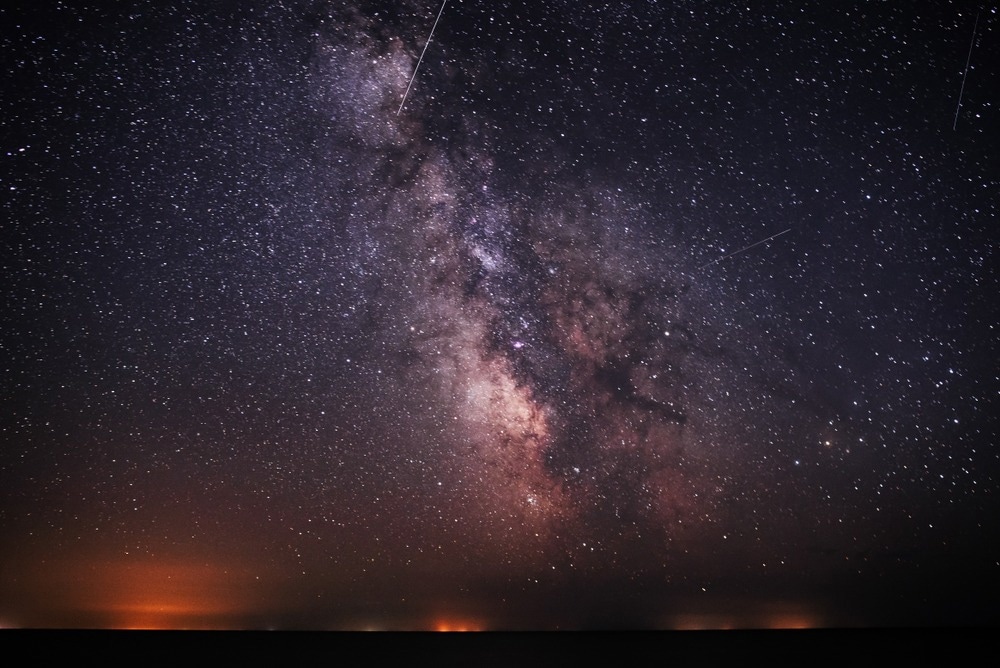Using computer simulations, astronomers have created a preview of what the sky might look like in gravitational waves, which are ripples in space-time caused by objects in orbit.

Image Credit: Kateryniuk/Shutterstock.com
Their efforts demonstrate how upcoming space-based observatories designed to detect gravitational waves, set to launch in the next 10 years, will help learn more about the Milky Way galaxy.
Since 2015, ground-based observatories have spotted around a hundred events where systems containing either stellar-mass black holes, neutron stars, or a combination of both have merged. These events are usually brief, lasting less than a minute, have relatively high-frequency signals, can occur in any direction in the sky, and originate from sources far outside the galaxy.
Binary systems also fill the Milky Way, and we expect many of them to contain compact objects like white dwarfs, neutron stars, and black holes in tight orbits. But we need a space observatory to ‘hear’ them because their gravitational waves hum at frequencies too low for ground-based detectors.
Cecilia Chirenti, Researcher, University of Maryland
Cecilia Chirenti is also associated with NASA’s Goddard Space Flight Center in Greenbelt, Maryland.
Astronomers have a special name for these systems: UCBs, which stands for “ultracompact binaries.” They anticipate that upcoming observatories like LISA (Laser Interferometer Space Antenna), a joint project between the ESA (European Space Agency) and NASA, will find tens of thousands of these UCBs.
UCBs are usually hard to detect because they do not shine brightly in visible light. Currently, astronomers are aware of only a few with orbital periods shorter than an hour. One of LISA's primary goals is to discover many new UCBs.
The team used simulated data to create a map of UCBs in the galaxy by combining their expected distribution and gravitational wave signals. The study was published in The Astronomical Journal.
Our image is directly analogous to an all-sky view of the sky in a particular type of light, such as visible, infrared, or X-rays. The promise of gravitational waves is that we can observe the universe in a totally different way, and this image really brings that home. I hope one day I can see a version made with real LISA data on a poster or T-shirt.
Ira Thorpe, Astrophysicist, Goddard Space Flight Center
Synthetic Gravitational Sky
Watch as gravitational waves from a simulated population of compact binary systems combine into a synthetic map of the entire sky. Such systems contain white dwarfs, neutron stars, or black holes in tight orbits. Maps like this using real data will be possible once space-based gravitational wave observatories become active in the next decade. Brighter spots indicate sources with stronger signals and lighter colors indicate those with higher frequencies. Larger colored patches show sources whose positions are less well known. The inset shows the frequency and strength of the gravitational signal, as well as the sensitivity limit for LISA (Laser Interferometer Space Antenna), an observatory now being designed by ESA (European Space Agency) in collaboration with NASA for launch in the 2030s. Video Credit: NASA’s Goddard Space Flight Center
Journal Reference:
Szekerczes, K., et al. (2023). Imaging the Milky Way with Millihertz Gravitational Waves. The Astronomical Journal. doi.org/10.3847/1538-3881/acd3f1.